2021:

Maura Ives, Ann Hawkins, Erin Bistline and Catherine Blackwell, eds. Playing Games in Nineteenth-Century Britain and America (SUNY, 2021). Playing Games focuses on the material and visual culture of both American and British games, examining how cultures of play intersect with evolving gender norms, economic structures, scientific discourses, social movements, and nationalist sentiments.
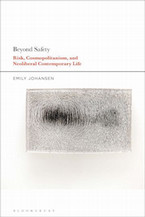
Emily Johansen, Beyond Safety: Risk, Cosmopolitanism, and Neoliberal Contemporary Life (Bloomsbury 2021). Beyond Safety argues that concerns about the ethical impossibility of individual safety in the face of risks with increasingly obvious global consequences alters representations of neoliberal contemporary life. Investigating depictions of global danger and safety in contemporary transnational fictional and popular texts, Beyond Safety demonstrates how these texts use risk to question and re-imagine the norms and practices of contemporary global citizenship.
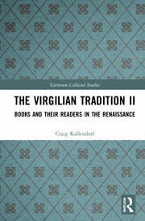
Craig Kallendorf, The Virgilian Tradition Vol. 2: Books and Their Readers in the Renaissance, Variorum Collected Studies Series, CS2003 (Milton Park, Abingdon-on-Thames: Routledge, 2021). The essays present a distinctive approach to the reception of the canonical classical author Virgil that is focused around the early printed books through which that author was read and interpreted within early modern culture.
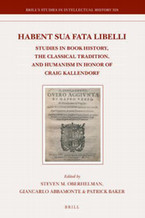
Craig Kallendorf, Early Printed Virgil Editions from 1500–1800: A Bibliography of the Craig Kallendorf Collection (Hildesheim: Georg Olms Verlag, 2021). This bibliography provides a catalogue of some 1,135 early printed editions and a half dozen manuscripts that contain the works of the Roman poet Virgil and related material. Included here are approximately one-third of all the known editions, which constitutes the largest such collection in private hands anywhere in the world.
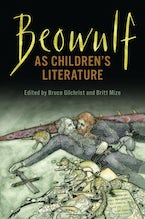
Britt Mize and Bruce Gilchrist, Beowulf as Children’s Literature (Toronto 2021). The single largest category of Beowulf representation and adaptation, outside of direct translation of the poem, is children’s literature. Over the past century and a half, more than 150 new versions of Beowulf directed to child and teen audiences have appeared, in English and in many other languages. In this collection of original essays, Bruce Gilchrist and Britt Mize examine the history and processes of remaking Beowulf for young readers.
2020:

Shawna Ross, Charlotte Bronte at the Anthropocene (SUNY Press, 2020). This book reinterprets Brontë’s oeuvre as an evolving multispecies vision of nature/culture contact zones at the start of the Anthropocene. It shows how Brontë creates some of the first literary ecosystems of the Anthropocene by creating images of environmental devastation and narrating the interpenetration of human and nonhuman histories of Yorkshire.
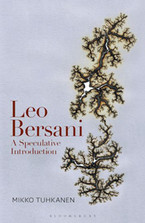
2019:
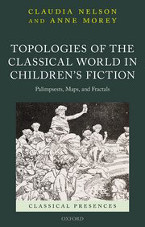
Anne Morey and Claudia Nelson, Topologies of the Classical World in Children’s Fiction: Palimpsests, Maps, and Fractals ( Oxford, 2019) Beginning with Rudyard Kipling and Edith Nesbit and concluding with best-selling series still ongoing at the time of writing, this volume examines works of children’s literature that incorporate character types, settings, and narratives derived from the Greco-Roman past. Drawing on a cognitive poetics approach to reception studies, the book argues that authors typically employ a limited and powerful set of spatial metaphors – palimpsest, map, and fractal – to organize the classical past for preteen and adolescent readers. A Children’s Literature Association recommended book.
Marian Eide, Terrible Beauty: The Violent Aesthetic and Twentieth-Century Literature (University of Virginia, 2019). Stretching across genres and the globe, Terrible Beauty charts a course of aesthetic reconciliation between empathy and evil in of twentieth-century literature. The “violent aesthetic” sheds new light on the relationship between violence, literature, and the moral burdens of art.
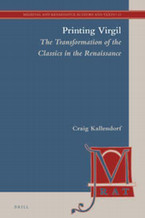
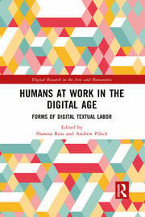
Ross, Shawna, and Andrew Pilsch. eds. Humans at Work in the Digital Age: Forms of Digital Textual Labor (Routledge, 2019). This collection explores the roots of twenty-first-century cultures of digital textual labor, mapping the diverse physical and cognitive acts involved, and recovering the invisible workers and work that support digital technologies. This collection shows how definitions of labor are influenced by digital technologies used to produce, interpret, or process text.

Nancy Warren, Chaucer and Religious Controversies in the Medieval and Early Modern Eras (U of Notre Dame, 2019). This study seeks to fill gaps in Chaucer scholarship by situating Chaucer and the Chaucerian tradition in an international textual environment of religious controversy spanning four centuries and crossing both the English Channel and the Atlantic Ocean. This book presents a nuanced analysis of the high stakes religiopolitical struggle inherent in the creation of the canon of English literature, a struggle that participates in the complex processes of national identity formation in Europe and the New World alike.
2018:

Donald Dickson, editor, The Works of Henry Vaughan (Oxford, 2018). This is the first newly prepared, complete edition of Henry Vaughan’s poetry and prose for over a century.

Eide, Marian and Michael Gibler,. After Combat: True War Stories from Iraq and Afghanistan (Potomac Books, University of Nebraska Press, 2018). After Combat tells the unvarnished stories of the wars in Iraq and Afghanistan. Participating veterans describe combat in the ways they believe it should be understood. They speak with pride about their own strengths and accomplishments, with gratitude for friendships and adventures, and also with shame, regret, and grief, while braving controversy, misunderstanding, and sanction.
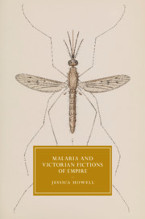
Jessica Howell, Malaria and Victorian Fictions of Emplre (Cambridge, 2018). The impact of malaria on humankind has been profound. Focusing on depictions of this iconic ‘disease of empire’ in nineteenth-century and postcolonial fiction, Malaria and Victorian Fictions of Empire shows that authors such as Charles Dickens, Henry James, H. Rider Haggard, Olive Schreiner, and Rudyard Kipling adapted and rewrote some common associations with malarial images such as swamps, ruins, mosquitoes, blood, and fever and made use of the unique potential of fiction by incorporating chronic, cyclical illness, bodily transformation and adaptation within the very structures of their novels. The book also argues that Amitav Ghosh and Derek Walcott use the multivalent and subversive potential of malaria in order to rewrite the legacies of colonial medicine.


